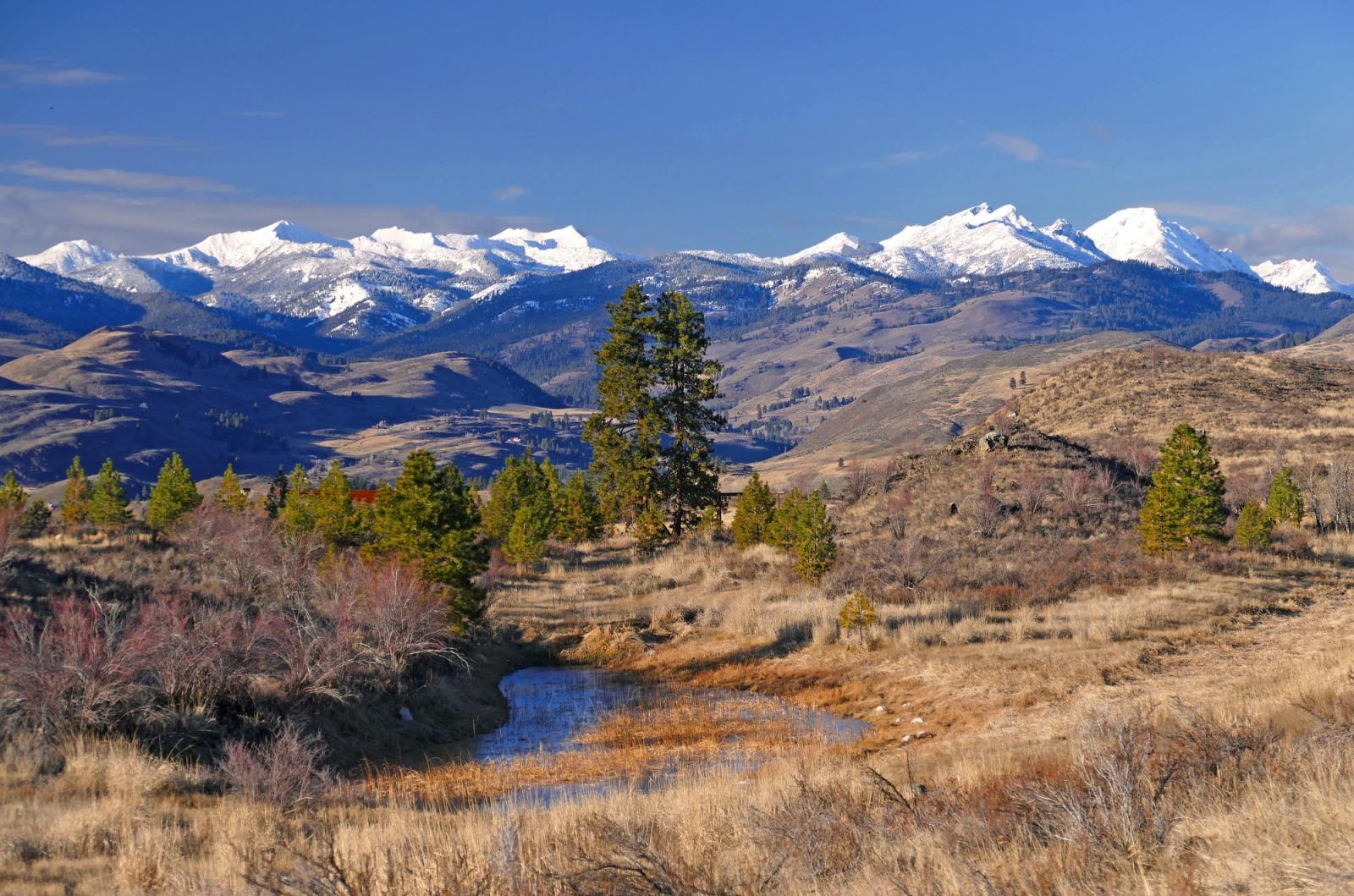
The Methow Unit is located in the foothills on the east side of the Methow Valley. A narrow strip of land about 18 miles long, it varies in width from 0.5 mile to 2 miles, stretching from Falls Creek on the north end to Frazer Creek and Highway 20 on the south end. Habitats vary from Ponderosa pine and Douglas-fir forests, to shrubsteppe, to aspen/cottonwood riparian areas along stream courses. This unit was purchased primarily for mule deer winter range, but it hosts a variety of wildlife, including nesting golden eagles.
The Methow Unit is located about 5.5 miles east of Winthrop in Okanogan County. The headquarters building can be accessed from the Bear Creek Loop Road-Pearrygin Lake State park turnoff, off of East Chewuch Road.
The Methow Unit lies within Methow River watershed. The area is bordered on the east and north by Okanogan and Wenatchee National Forest, and on the west and south by private land.
This unit is part of the Methow Wildlife Area.
Game Management Units: 239, 224, 218
Getting there
Maps and directions to WDFW-managed access points for this unit. Opens Google Maps in a new tab.
Recreation and public access
A Discover Pass is required on WDFW lands -- including water access areas, wildlife areas, and campgrounds -- unless you already have a Vehicle Access Pass issued with the purchase of an eligible hunting or fishing license. Recreate responsibly on public lands: please know the Public Conduct Rules.
Public facility information:
- Parking along county and U.S. Forest Service roads
- ADA restrooms
- Boat launches
- Developed campgrounds
Recreation and access advisories
- U.S. Forest Service roads are not open during winter months. Other roads may not be plowed during winter.
- Walk-in access only. Motorized vehicles are prohibited.
Hunting
On this unit, hunters may find opportunities to harvest black bear, cougar, deer, elk, waterfowl, Eurasian collared dove, forest grouse, gray (Hungarian) partridge, moose, mourning dove, quail, small game, and turkey.
Hunting advisories
- SAFETY ZONES have been established west of Bear Creek Road and near Frazer Creek along Highway 20. Weapons may not be discharged within these zones.
Fishing
Check out water access opportunities at Sullivan Pond, Cougar Lake, Campbell Lake, Bear Creek water access sites #1 and #2, Beaver Creek, the Chewuch River, and Ramsey Creek are open for fishing throughout the year.
Wildlife viewing
This unit includes Ponderosa pine, Douglas-fir forests, aspen, cottonwood, shrubsteppe, and streams, offering opportunities to view a variety of wildlife, including mule deer, small mammals, forest grouse, golden eagles, songbirds, amphibians, and reptiles.
Golden eagles nest on this unit.
Search for potential birding opportunities on or near a wildlife area unit by using eBird Northwest, a citizen science database portal that provides freely-shared bird lists at 'hotspots' and interactive maps plus other birding information updated daily.
Conservation
Special habitats and species
Aspen, cottonwood, rose, snowberry and a variety of shrub and forb species dominate riparian areas along most waterways, which are critical habitat for a variety of species, including songbirds, cavity nesters, amphibians and reptiles, small mammals, nesting golden eagles, and three species of forest grouse.
Conservation goals
- Create, restore, and enhance a mosaic of habitat
- Maintain and restore native plant communities
- Manage mule deer winter range
- Manage for species diversity including game and nongame species
Aspen, cottonwood, rose, snowberry and a variety of shrub and forb species dominate riparian areas along most waterways, which are critical habitat for a variety of species, including songbirds, cavity nesters, amphibians and reptiles, small mammals, nesting golden eagles, and three species of forest grouse.
- Create, restore, and enhance a mosaic of habitat
- Maintain and restore native plant communities
- Manage mule deer winter range
- Manage for species diversity including game and nongame species
Land stewardship
The Methow Unit was purchased primarily for mule deer winter range.
Acquisition history
The parcels making up this area were purchased between 1941 and 2014.
| Funder | Fund |
|---|---|
| State of Washington | Transfer of land |
| US Fish and Wildlife Service | Endangered Species Act Section 6 Program |
| US Fish and Wildlife Service | Pittman-Robertson Wildlife Restoration Program |
| US National Park Service | Land and Water Conservation Fund |
| WA Dept of Fish and Wildlife | WDFW Game Fund (now Wildlife Fund) |
| WA Recreation and Conservation Office | State Bond Account |
| WA Recreation and Conservation Office | Washington Wildlife and Recreation Program |
Management planning
2006 Methow Wildlife Area Management Plan
Every eight to 10 years, the Washington Department of Fish and Wildlife (WDFW) revises management plans for each of its 33 wildlife areas to document current conditions, address new agency initiatives, and identify new management priorities and actions. In between those major revisions, WDFW updates plans every two years to outline short-term objectives and accomplishments. In 2014, WDFW began the process of updating existing plans, many of which were written in 2006. The new plans are being developed with significant public participation and input.